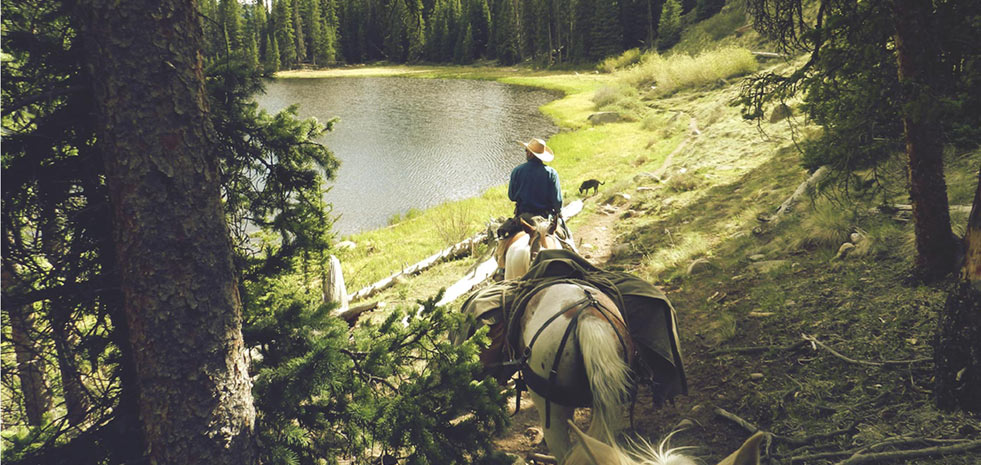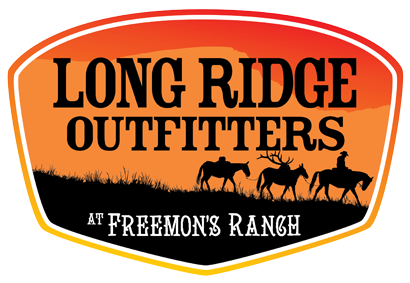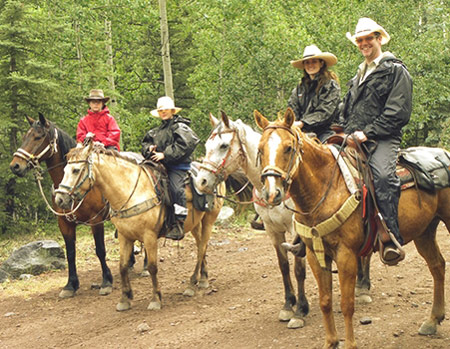Pricing
Please contact us for updated pricing: 719-580-8049
Pricing for multi-day trips: We specialize in meeting your specific needs and will be pleased to customize and quote a trip for your group. Prices will vary based on the number in the group, length of stay, and services provided. We have a three-day minimum for all trips. We also require wranglers to help with camp chores and tending to the horses. Number of wranglers depends on the number of riders and pack animals required.
Policies
Reservations must be made for all our trips. We require at least two weeks advanced booking for our summer pack trips. However, we suggest that you make reservations as soon as possible in advance to assure you an opening for the dates you desire.
Hunting bookings should be made as early as possible. We require a 50% deposit on all of our guided hunts. The balance is due on your arrival in camp. (Deposits can be transferred to another hunt or applied to a different date.) Transportation can be provided from either Gunnison or Alamosa airports to our ranch headquarters outside of Creede. Additional information concerning hunting costs, license fees, application and permit drawing information and what necessary equipment to bring will be provided upon request.
What To Bring
Most individuals experienced in the backcountry have perfected their own list of necessary items for a safe and comfortable wilderness experience. Backpackers in particular know what is required to meet the essential needs of: (1) Water and hydration, (2) Food and food preparation, (3) Clothing, (4) Shelter and bedding, (5) Fire, (6) First Aid, (7) Hygiene, (8) Knives and other tools, (9) Lighting, (10) Communications, and (11) Personal safety and protection.
In addition there are many excellent sources on the Internet, and/or reputable outdoor recreational companies (REI, LL Bean, TheNorthface, Sierra Trading Post, Cabelas, etc.), which provide useful information and are a ready source for equipment and supplies. You are strongly encouraged to research these and other resources and develop your own list of essentials that is tailor-made for your needs and planned activities.
On fully guided pack trips, which typically operate out of a base-camp, some of these needs will be taken care of as noted below. However, we cannot over emphasize the importance of physical conditioning, personal preparation, the proper equipment, and development of the skills required for self-reliance. Being prepared simply adds to one’s self-confidence, and the ability to relax in the great outdoors, knowing that you are capable of handling most situations that may occur.
Below is a partial list of things to consider, but again … we encourage you to do your own research and be properly equipped.
Water and hydration
Potable water and water for showers will be provided in permanent base camp locations only. Adequate hydration is essential at high altitudes. For day-trips away from base camp, some choose to use a backpack hydration system. The following are recommended as a minimum:
(1) Drinking container … 32 oz. Nalgene Hard Bottle and/or Metal Water Bottle
(2) Water purification capability
Food and food preparation
In permanent base camp locations, these needs are taken care of by the outfitter. Those who choose a drop-camp arrangement must provide totally for these needs.
Clothing
Weather in the mountains is unpredictable. During the summertime, days are generally warm; nights are chilly and sometimes cold. Hypothermia is always a concern, so we recommend a layered system, with quality fabrics that wick moisture and are fast drying. Any reputable outdoors store can guide you in this area. It is your responsibility to be adequately prepared in terms of clothing. Some basics include but not limited to:
(1) Wool socks designed for out of doors … bring extra pairs
(2) Durable, water proof, ankle-high hiking boots
(3) If you plan to ride, western boots are a nice addition
(4) Outer shell (with hood and pants) for wind and water protection
(5) Heavy and/or mid-weight fleece for layering
(6) Light weigh wicking base layer
(7) Wool or fleece hat for warmth
(8) Wide brim hat for sun protection
(9) Bandana
Shelter and bedding
Most clients prefer their own tents, and especially their own bedrolls. Unless prior arrangements are made, guests are expected to provide these items. Remember, nights in the high country are chilly and often cold, so keep this in mind when choosing your equipment.
Fire
On fully guided pack trips (either permanent camps or progressive locations) your guide will take care of these needs. Experienced backpackers know that it is wise to carry at least three means of starting a fire. Fire building is an essential skill for anyone who spends anytime in the outdoors, and we recommend that all clients (even on fully guided trips) carry at least two means of fire building and become familiar with the process of fire building before you arrive. The reason is simple … nothing is more reassuring or more important than knowing that you can build a fire if necessary. Fire building essentials are inexpensive and easy to use. Check your local outdoor store for these items.
First Aid
By definition, your trip will take you to remote locations, far away from immediate medical attention. Your wrangler will have essential first aid supplies on all guided trips. Clients need to communicate in advance if they have any medical conditions, or might require any special help. Personal medications are your responsibility, and should be packed in waterproof containers. In addition, it is both prudent and recommended that each individual carry a suitable first aid kit in their backpack or daypack. There are many pre-packaged first aid kits available, or you may want to build your own. One of the essentials to include is moleskin (or suitable alternative) to treat blisters. Just as with fire building, anyone venturing outdoors should have basic training in emergency first aid. Be prepared before you arrive, and remember to include a space blanket or other means of emergency shelter.
Personal Comfort and Hygiene
To repeat, an adequate supply of personal medications is your responsibility. In addition, you want to be prepared with other items that will enhance your comfort and enjoyment. Most items are available in convenient travel sizes. A partial listing (you personalize) might include:
(1) Extra pair of eye-glasses (if essential to your functioning)
(2) Sun Glasses (strongly recommended)
(3) Sun screen and lip balm
(4) Moisturizer or skin lotion
(5) Travel size hand sanitizer, soap, shampoo
(6) Feminine products (as appropriate)
(7) Wash rag and towel
Knives and other tools
On guided trips, the outfitter provides essential tools such as axes, saws, etc. Back packers know what is required and carry their own equipment. As a minimum, it is recommended, that each individual carry a suitable survival knife, and/or multi-tool.
Lighting
Next to a fire, there is nothing more comforting that the ability to “light the darkness.” On guided trips, your outfitter will have lanterns, etc. in the base camp. However, as with fire and first aid, you want to be prepared. As a minimum we recommend:
(1) A hands free LED Headlamp
(2) A small back-up LED flashlight
(3) Extra batteries for these and communications devices
Communication and Navigation
For guided pack trips, the outfitter will have a communications device for use in emergency situations. In addition, clients who chose the drop camp option will be provided a SPOT device to “communicate” as needed. Individual preferences will vary depending on the nature of your activities, and you are encouraged to bring whatever communications device you feel is appropriate for your situation.
Again, seasoned backpackers know their needs, so the following is a general list that others may wish to consider:
(1) Topographic (and other) maps of the area
(2) GPS (know how to operate)
(3) Compass (for back up)
(4) Hand-held radio (to stay in contact with others)
(5) Batteries for all communications and lighting devices
Personal Safety and Protection
Anyone who ventures into backcountry knows that a safe and enjoyable trip is directly related to individual attention to detail and alertness for potential hazards. In other words, a lot depends on you exercising good judgment. So be cautious, be careful, and minimize risks.
Special Note: The country we travel in is generally safe. For those who have an interest, a firearm is permitted for self-protection in most National Forest lands. It is your responsibility to check and comply with all regulations regarding the transportation to and from the point of departure in the National Forest.
Other
If you plan on fishing, it is recommended that all rods be sectional, i.e. 3 or 4-piece pack style, for ease of transportation. Light and Ultra-light rods are suitable for stream and alpine lake fishing. Bring assorted dry flies and small nymphs, or suitable spinners for spin casting.


